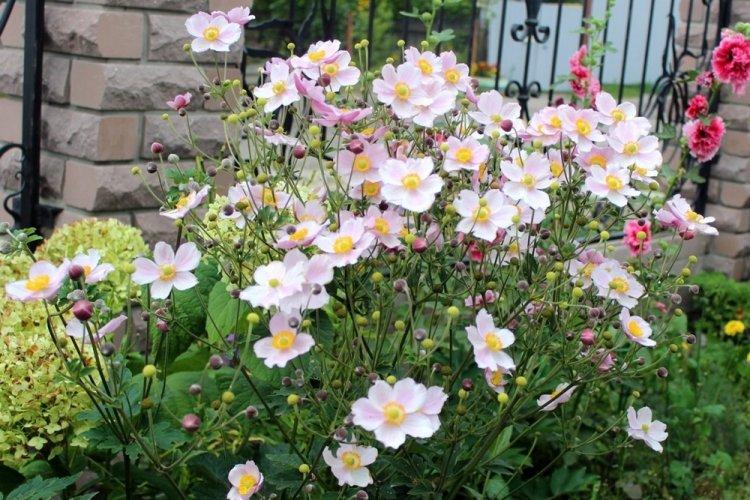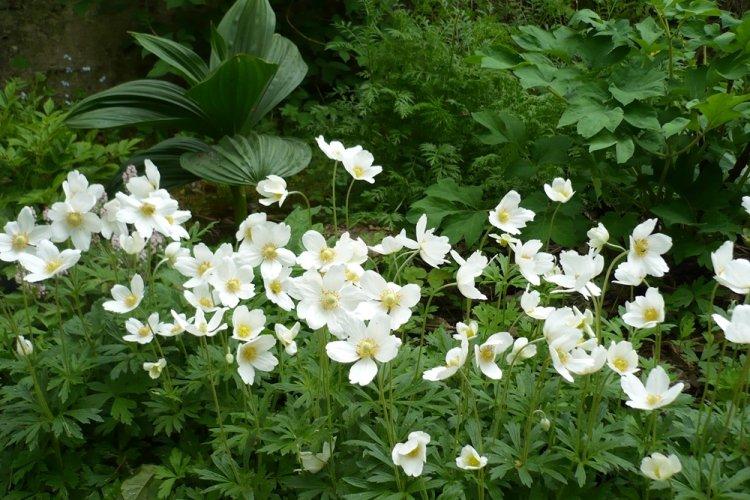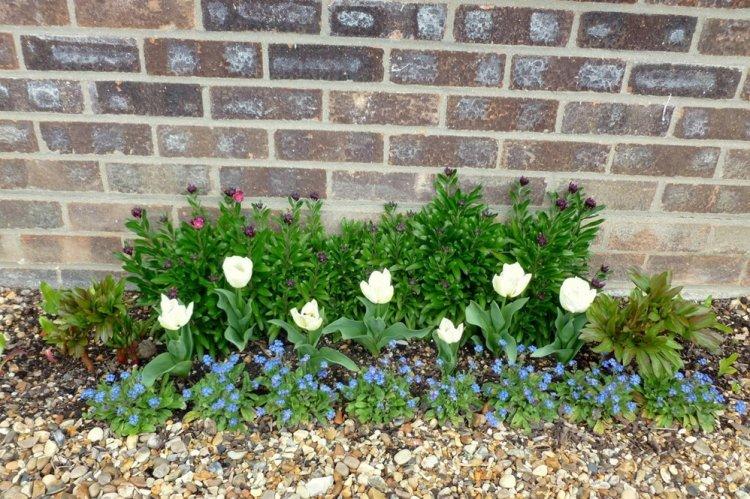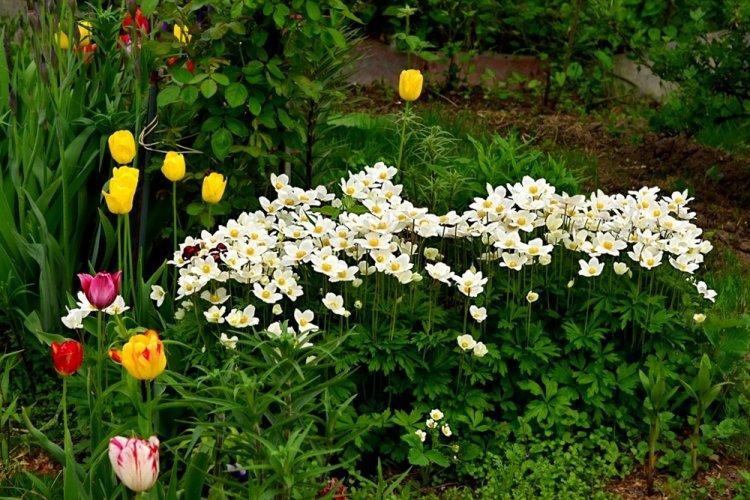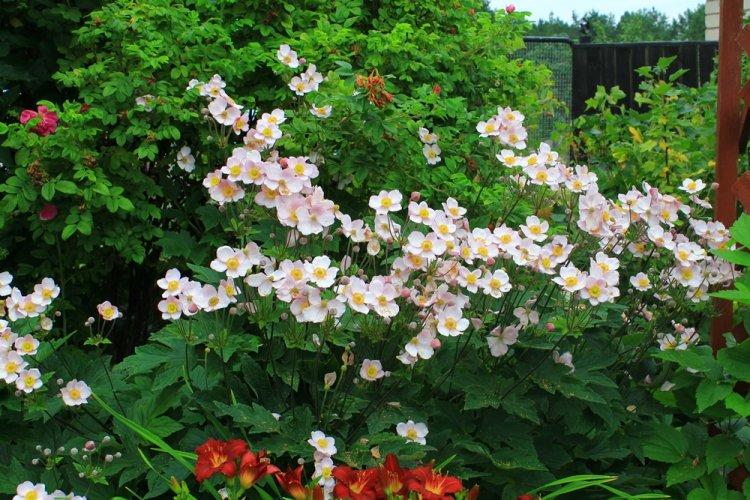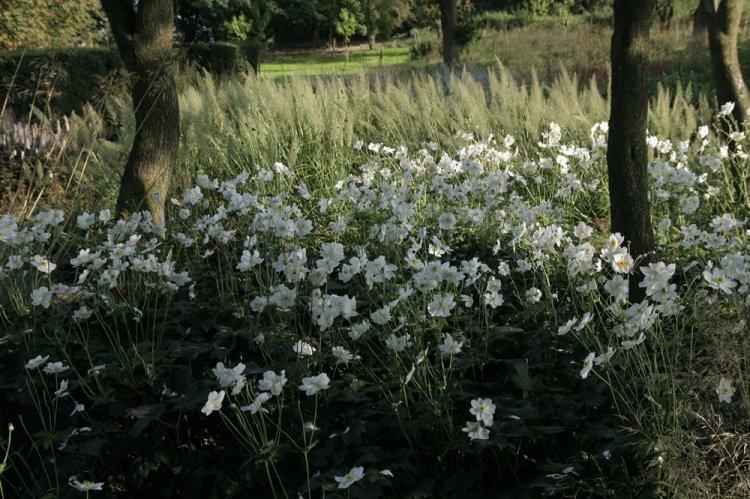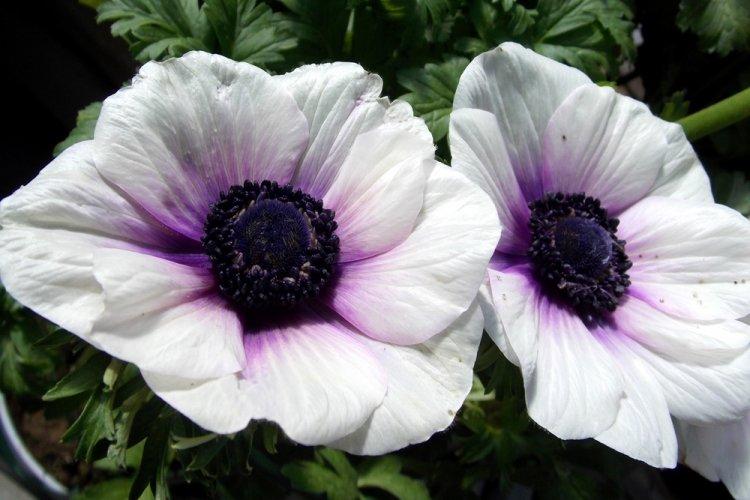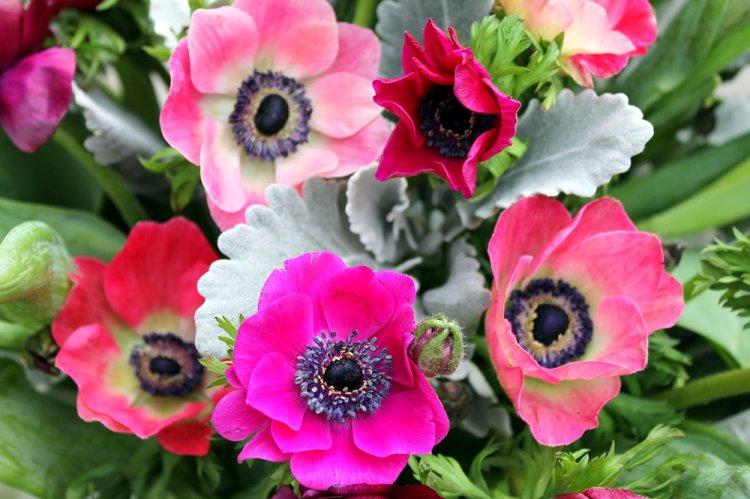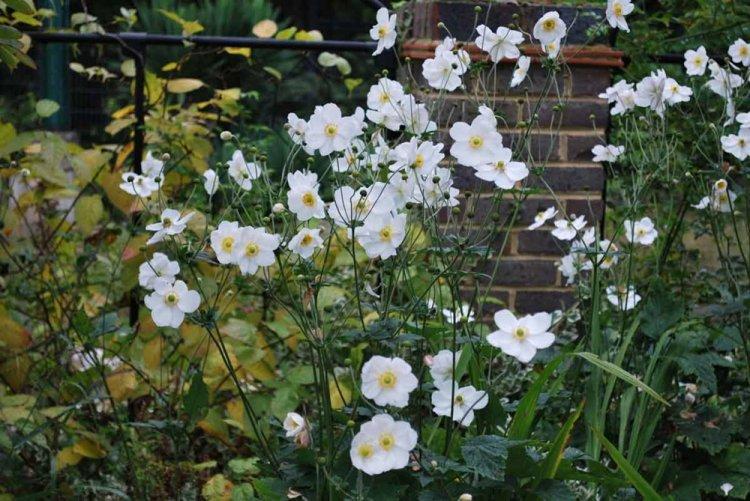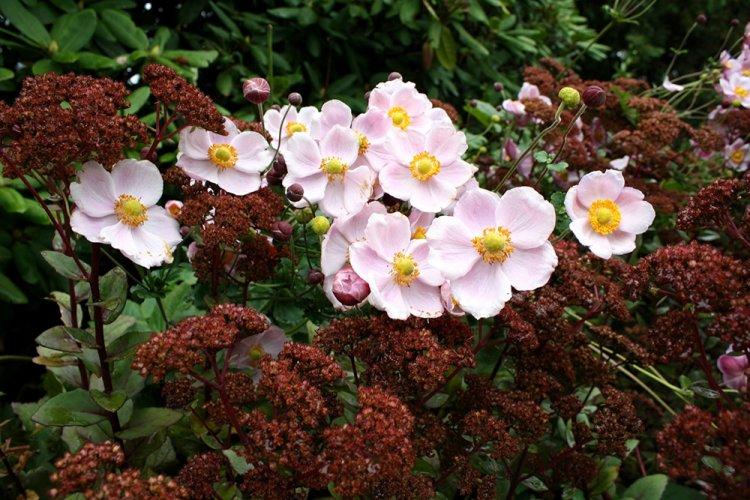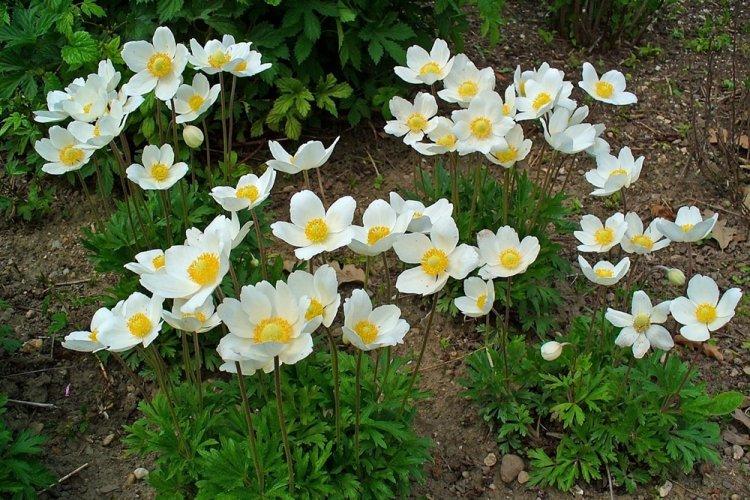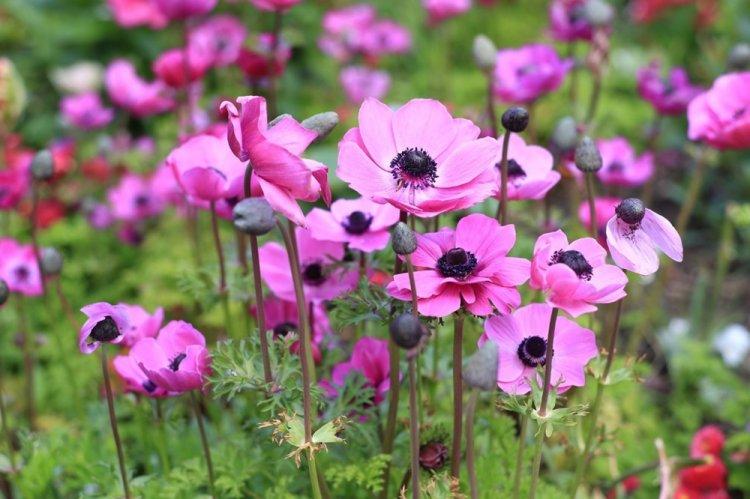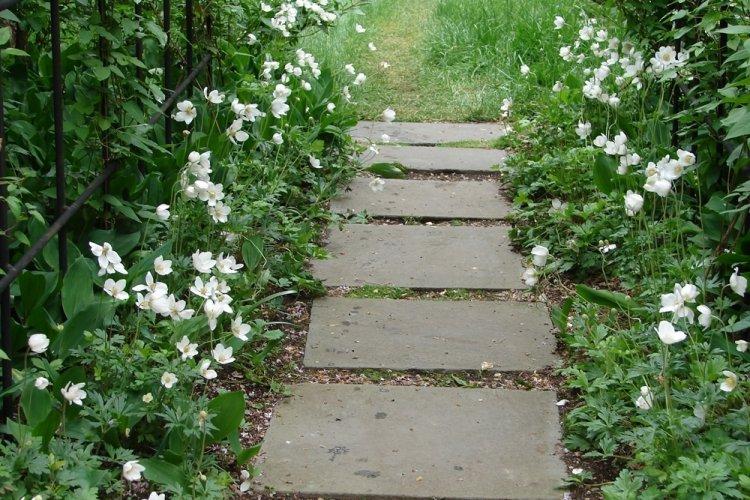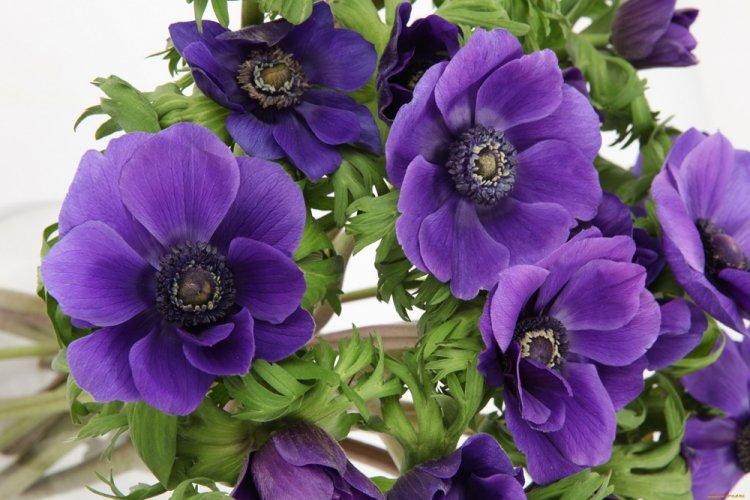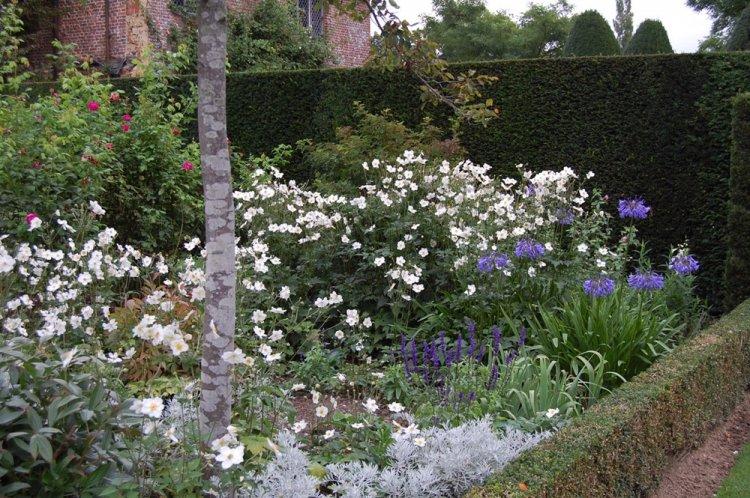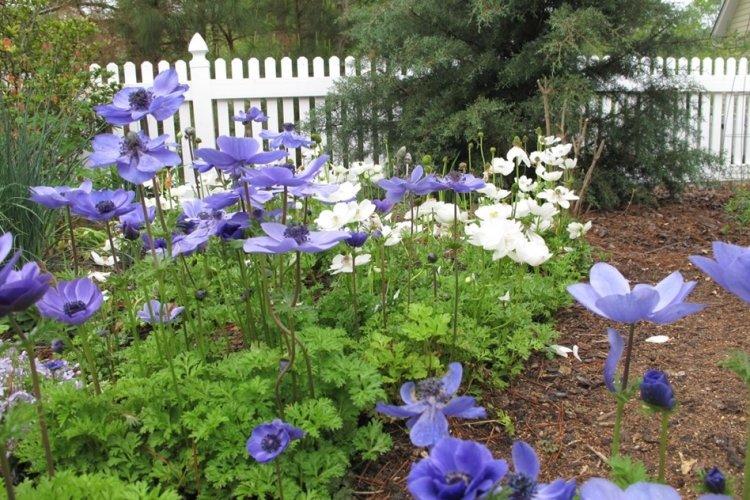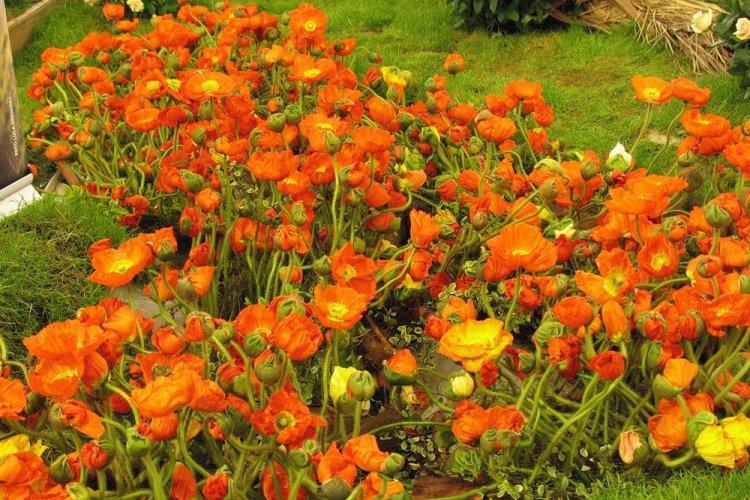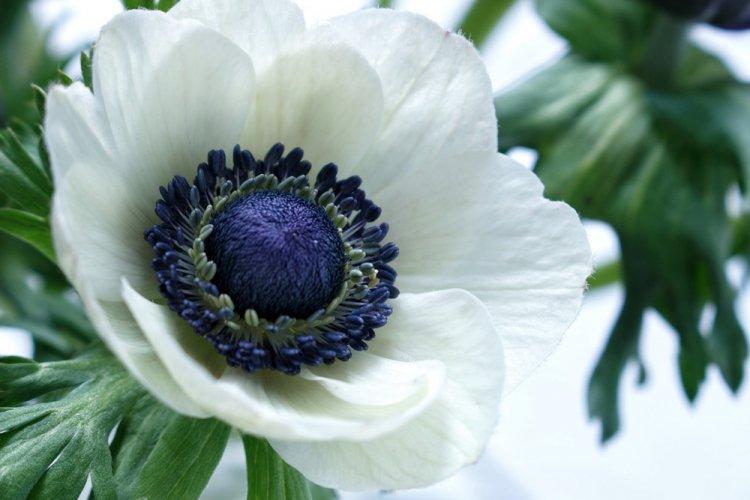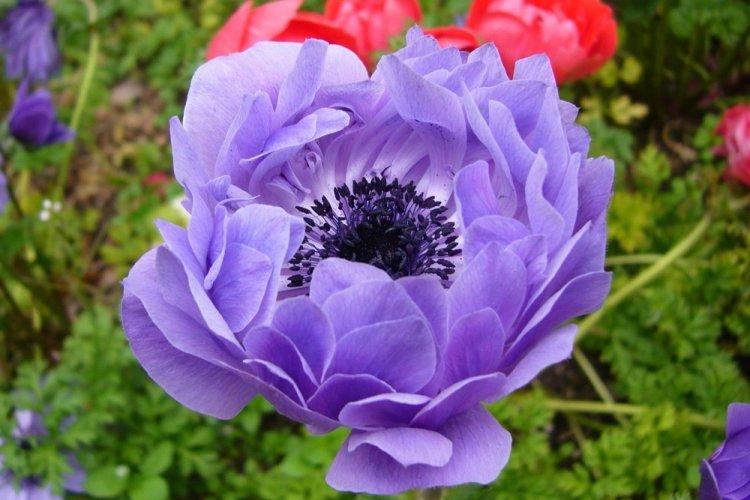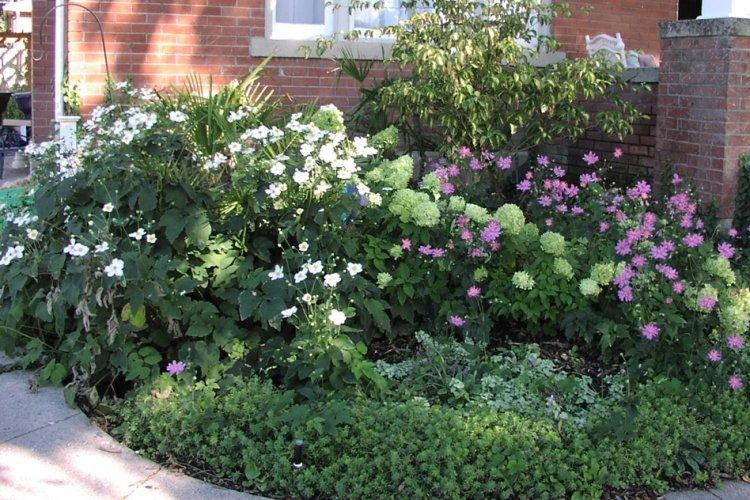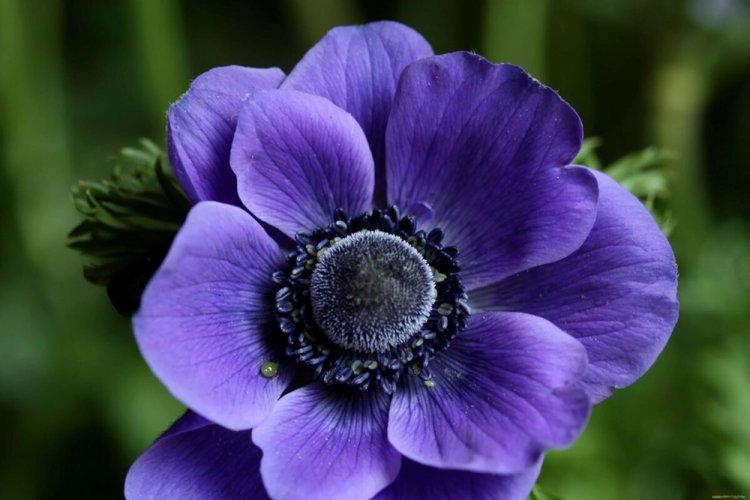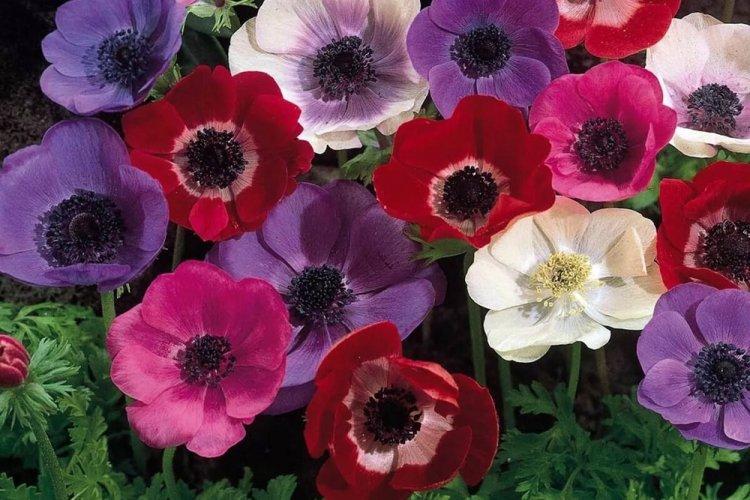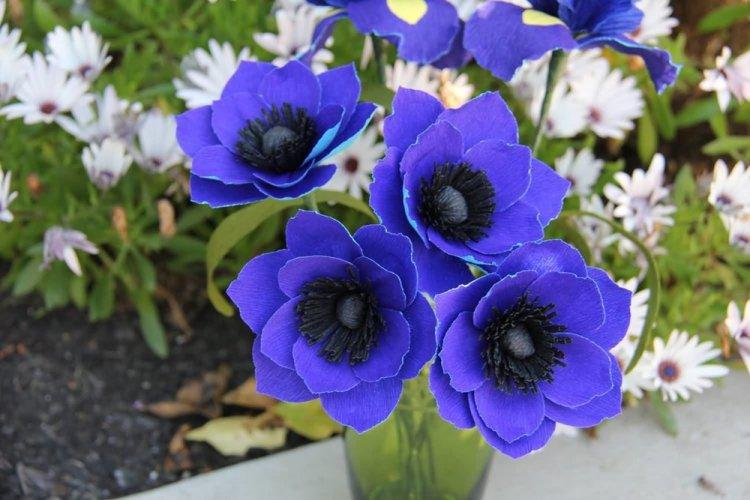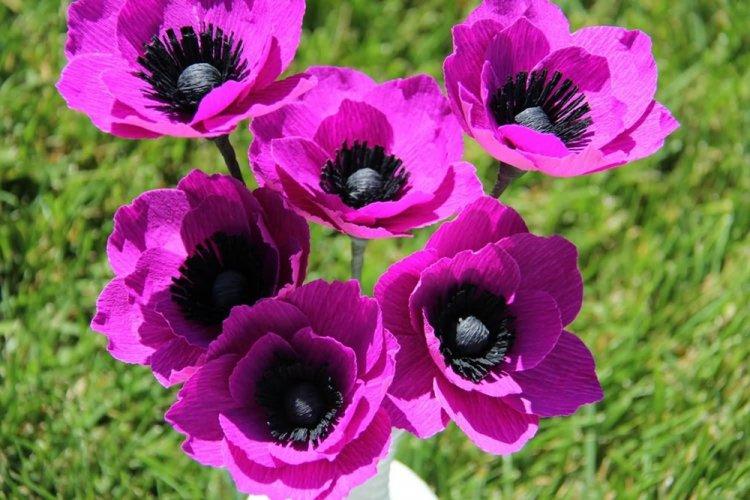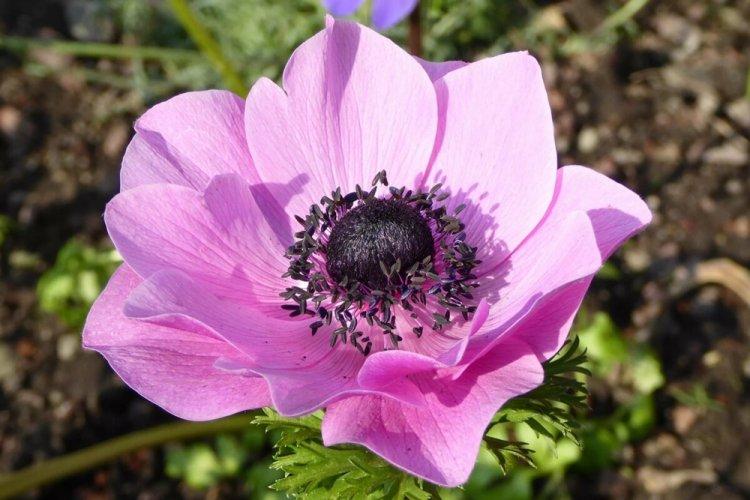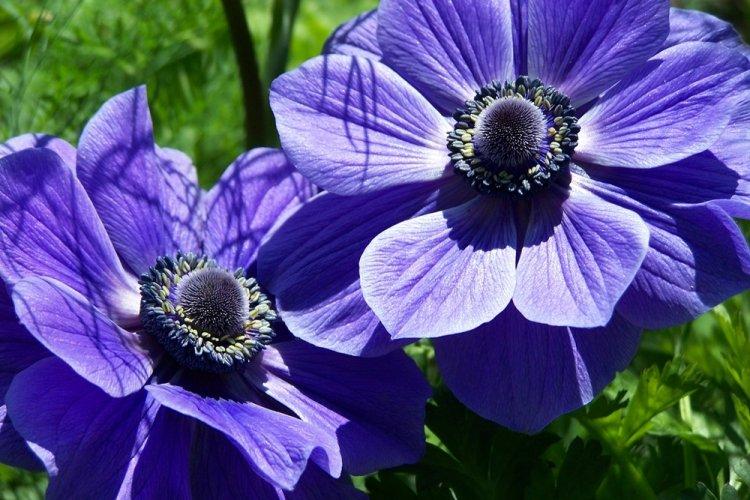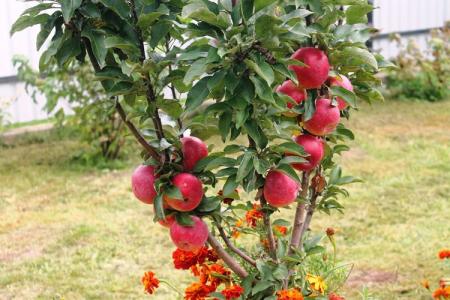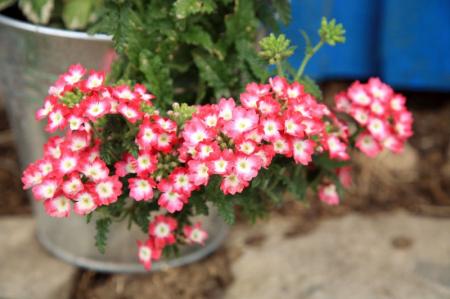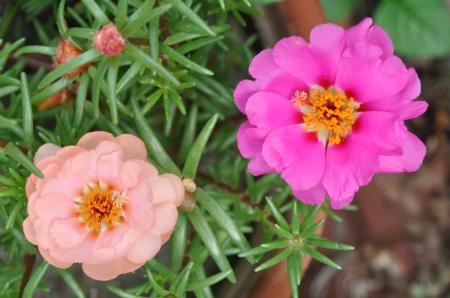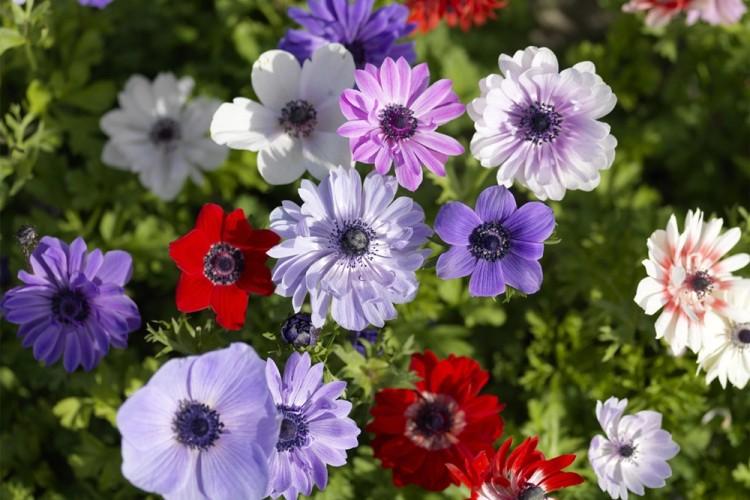
Anemones delight gardeners with large flowers of all kinds of colors. They look very beautiful against the background of greenery, stones and other smaller plants. Greek myths tell that anemone is a symbol of love between Aphrodite and the beautiful Adonis. And you can easily grow such a miracle in your own garden!
general information
The second name of the anemone, better known in our latitudes, is anemone, in fact, an almost literal translation of the scientific name. This is probably because the large, delicate petals are very sensitive to gusts of wind. Large voluminous flowers sway and tremble on thin, tall peduncles.
Anemones have long stems and a cylindrical or tuberous root system. She well stores nutrients for a lush and long flowering. Large flowers are symmetrical and multi-colored: from white to blue, yellow or red. Scarlet anemones are often confused with wild-growing poppies.
In nature, anemones grow in forests and shady lawns, in mountain valleys, hills, meadows and even in the tundra. Some species are used in medicine, while others are exclusively for decorative purposes.
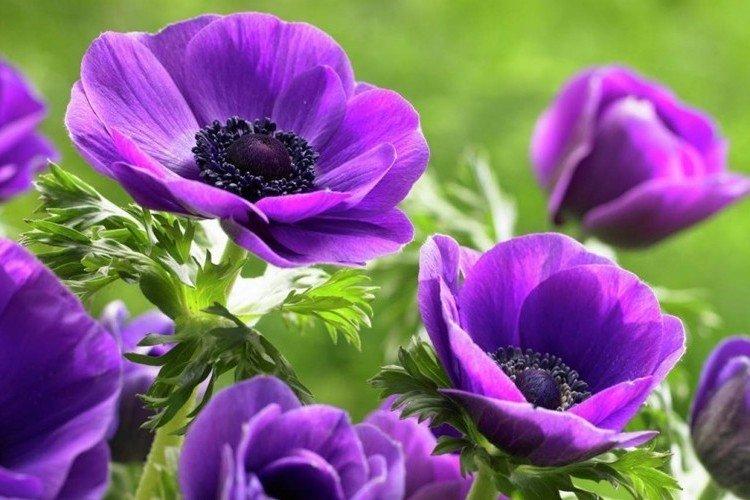
Types of anemones
In total, there are more than 150 varieties of anemones that bloom at different times. Because of such a variety in varieties, even experienced flower growers are sometimes confused. Now let's talk about the most popular of them!
Common anemone
It is the most common primrose and is found in the field and in the wild. Common anemones have large bell-shaped flowers with wide white, purple or red petals. The height of the stem reaches 15 cm, and the beauty of the buds is emphasized by the dense edge of the petals.
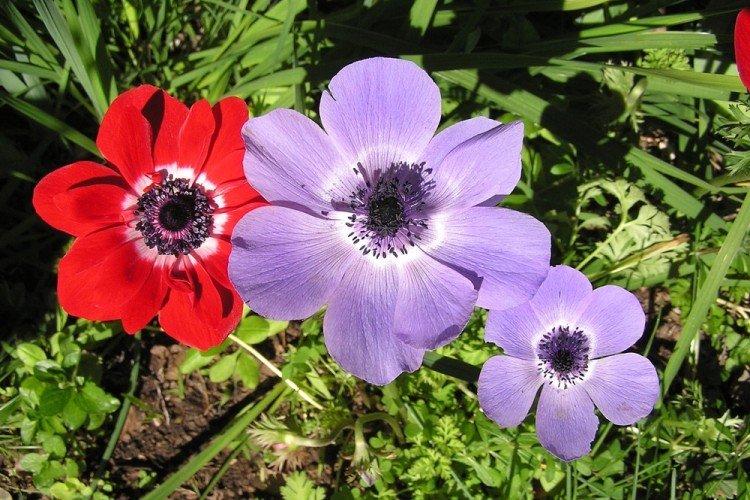
Oak anemone
It is one of the fastest growing varieties and is becoming more popular every year. Oak anemone blooms with beautiful white flowers, but sometimes blue, pink and lilac varieties are found. Terry hybrids up to 3 cm in diameter look very impressive on low dense bushes of a dark green hue.
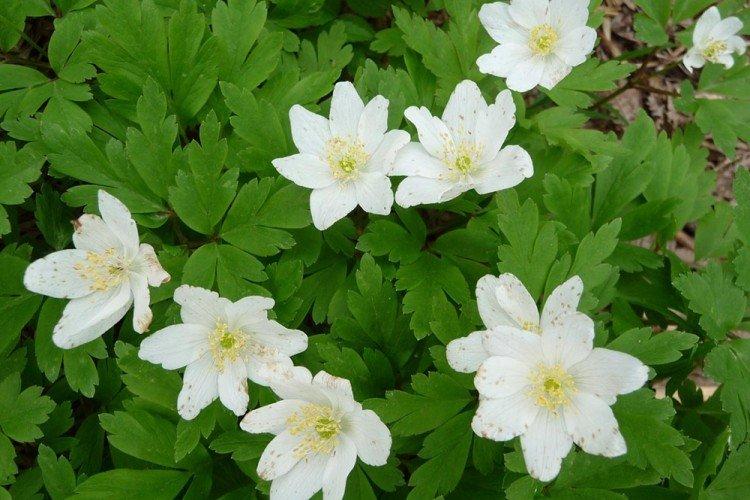
Garden anemone
Large flowers up to 5 cm in diameter are collected from many thin petals. There are white, pink, purple and red varieties with multi-colored stamens. Garden anemone does not tolerate frost well, therefore, it must be especially carefully insulated for the winter.
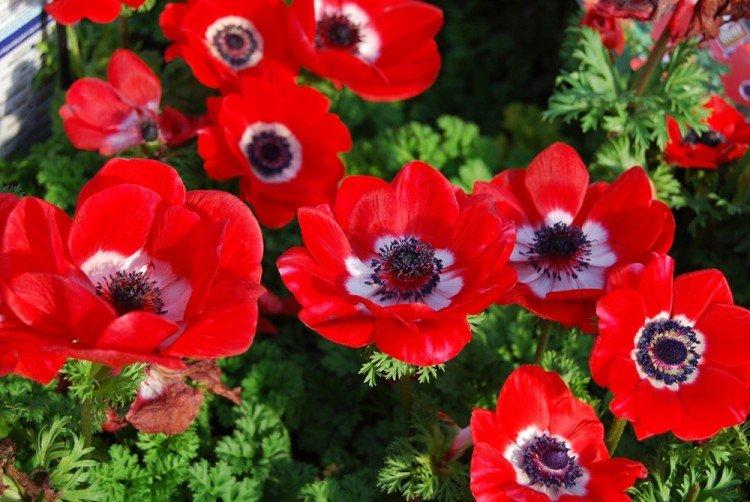
Delicate anemone
A miniature graceful variety with a height of no more than 10 cm fully corresponds to its name. It does not bloom for long, but it germinates easily and looks very beautiful. Flowers emerge immediately from the snow at the same time as the leaves, so this is a good seasonal option.
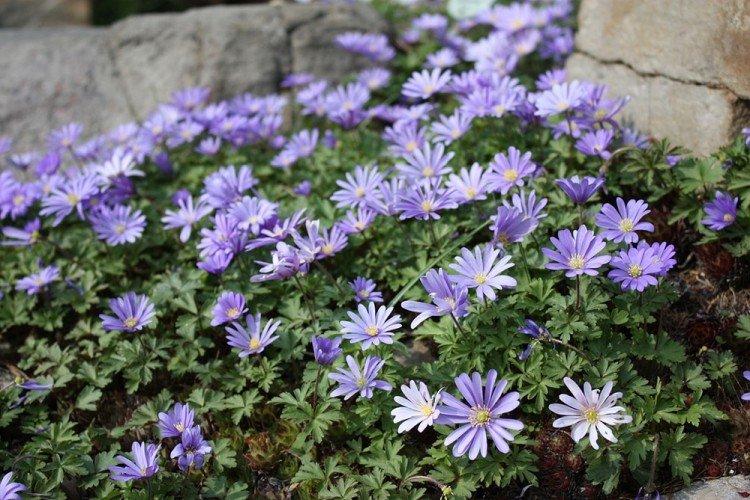
Crowned anemone
The species received its name for the special structure of the flower, which consists of several layers of petals. Moreover, in diameter they reach 8 cm, so that the crown anemone is a real garden queen in its kind. Stems rarely stretch above 20 cm, although in warm southern latitudes they can grow up to 40 cm.
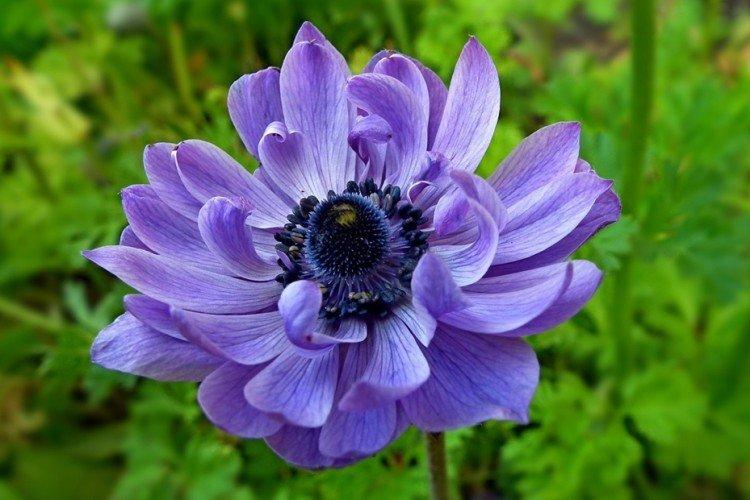
Buttercup anemone
This is a wild-growing species, fully adapted to our latitudes. Buttercup anemone seeds are not easy to find, but they survive in any conditions and on any soil. Breeders have bred varieties with double flowers.
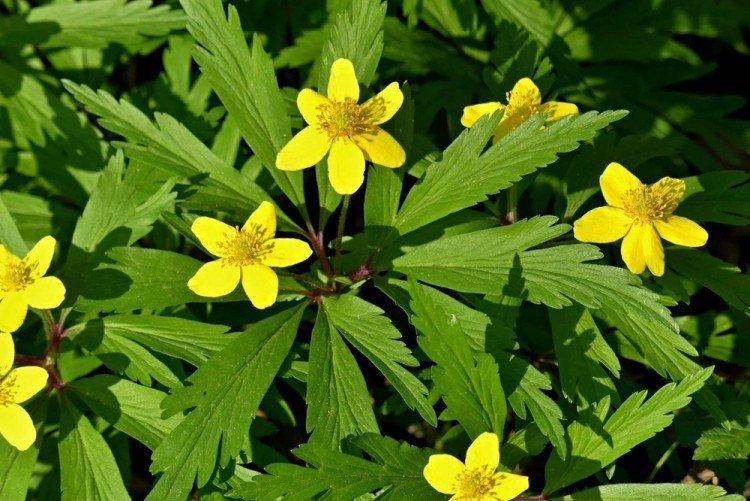
Japanese anemone
This is a rather tall shrub up to 40 cm with dark saturated leaves. Flower buds are collected in loose loose inflorescences. Japanese anemones are good for a variety of colors and shades, for which they are appreciated by gardeners.
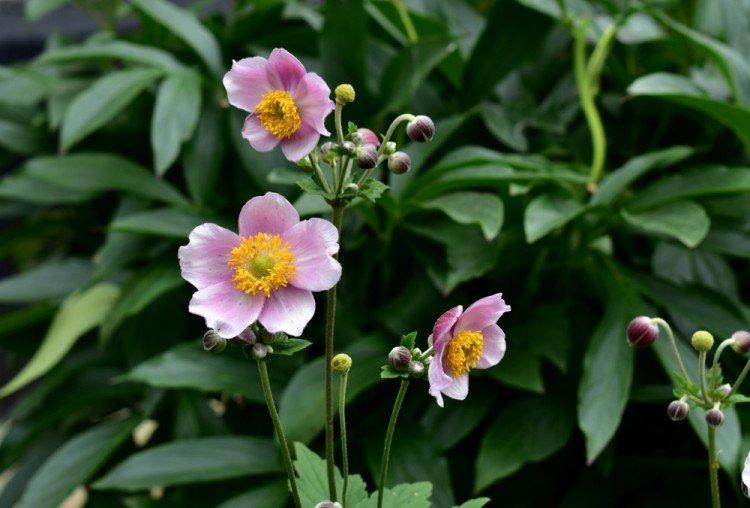
Anemone lipciensis
Another fast growing and extremely unpretentious plant with delicate creamy flowers. There are yellowish and double varieties, but in any case, the warm petals contrast with the neutral dark leaves.
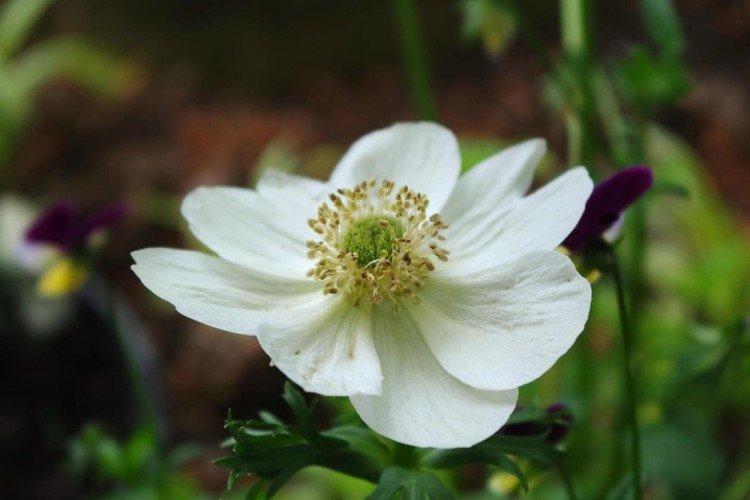
Care for anemones
In nature, a bright, spectacular flower is found in almost the entire Northern Hemisphere, up to the Arctic. Thanks to this, anemones easily adapt to our climate and latitudes.Even inexperienced flower growers will have no problems with growing!
Temperature
The ideal temperature for anemones during flowering is about 15-17 degrees, but at the growth stage - 12-13 degrees. But there are some subtleties that depend on the variety. For example, winter-hardy hybrids tolerate frosts down to -20 - -30 degrees.
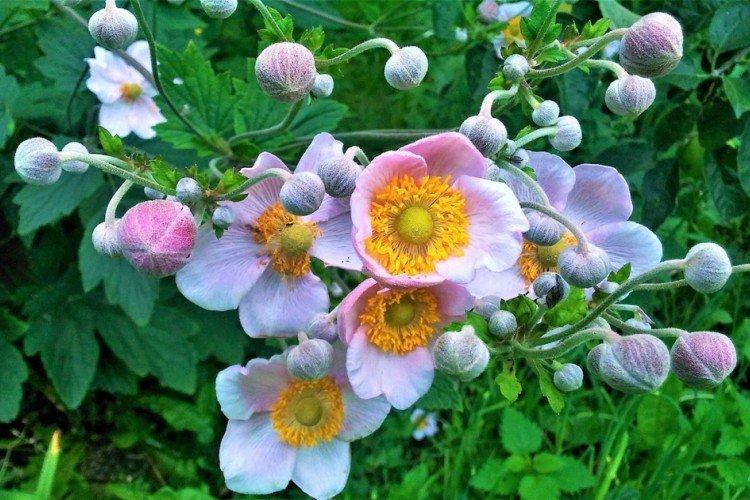
Lighting
Lighting features depend on when a particular cultivar is blooming. Spring anemones are more fond of diffused light and clear weather, but they feel good in partial shade. Autumn needs more sun, and of that - about 5 hours of direct sunlight.
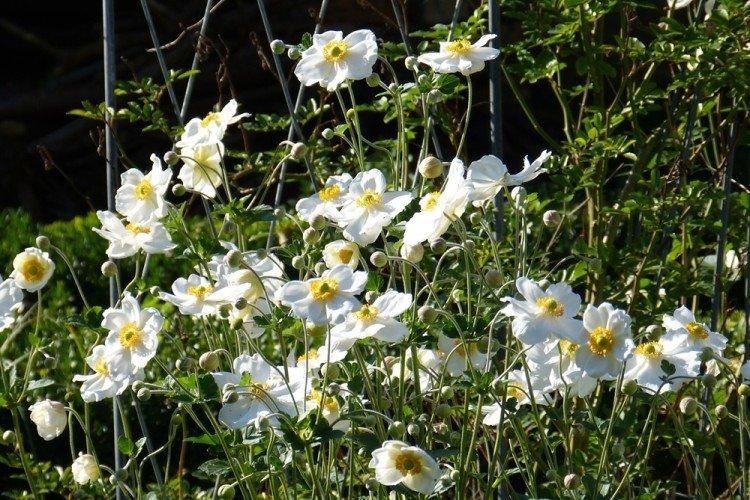
Watering
Humidity is one of the main requirements for growing beautiful and healthy anemones. But at the same time, they cannot be poured, otherwise the rhizome will rot. If it rains regularly in spring and summer, reduce the frequency, but in dry weather, water the flower once a week. And be sure to cover the soil with a layer of mulch a couple of centimeters thick.
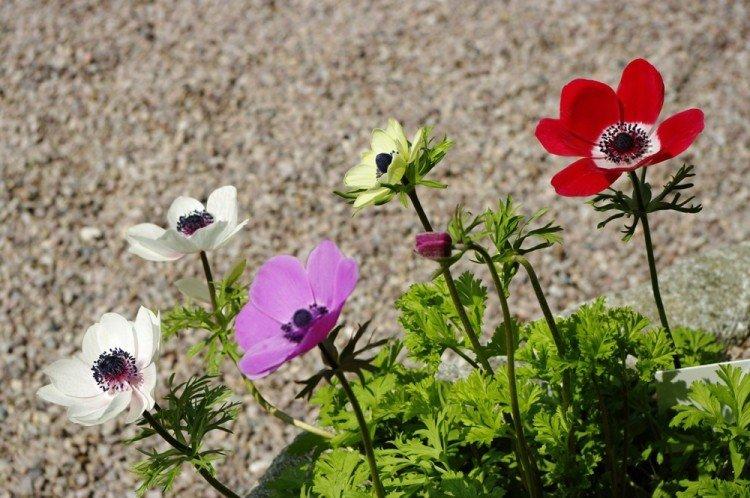
Soil and fertilizers
Use a nutrient mixture for flowers - and you can do without feeding at all. Otherwise, when anemones are blooming, be sure to add organic fertilizers to the soil. In the fall, it is worth switching to mineral complex mixtures. Remember to regularly loosen the soil and pull out weeds, but do not damage the delicate rhizome.
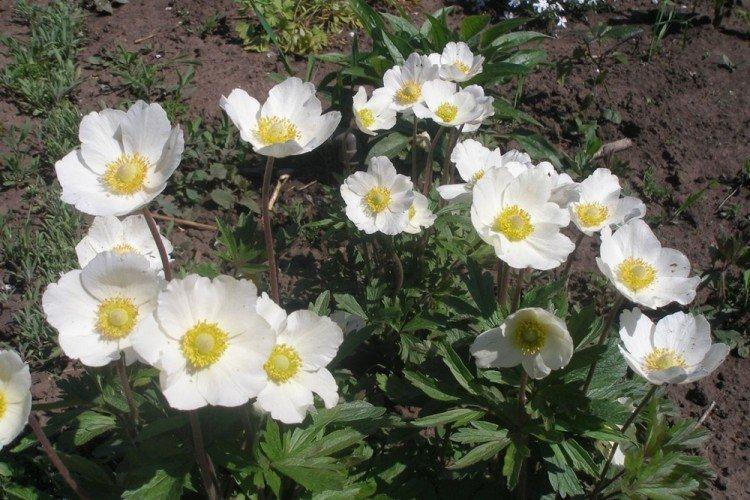
Transplant and reproduction
To properly plant the tubers in the ground, you will have to find a growth point for each of them. It must be on top and not covered with earth. Pour wood ash and humus into a hole 15 cm deep, and then lay out the tuber and tamp it with soil.
Anemones from seeds are grown only by experienced growers, because it is long and difficult. Seedlings can be transferred to open ground only in the second year, and the first flowering will come after three years. But if you choose and combine the varieties correctly, you can create a flower bed that will bloom from early spring to late autumn.
Tubers of an adult anemone 4-5 years old can be divided during transplantation. Plant the finished cuttings about 5 cm long in loose soil and wait for rooting. They will become fully mature in 2-3 years, and then they will start to delight you with stable flowering.
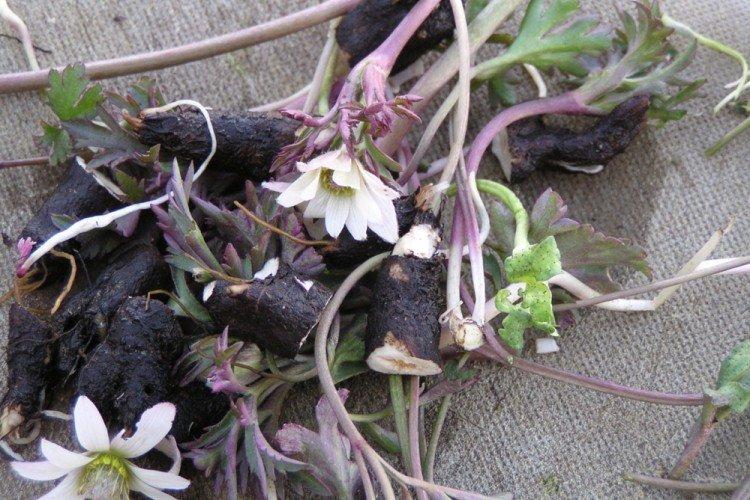
Wintering
In warm latitudes, anemone can overwinter under a thick layer of spruce branches or leaves. But in cold ones, so that the tubers are ready for next year, they will have to be dug up. Remove the entire ground part and put them in boxes in sand or peat - until spring they will lie in a dark, cool place.
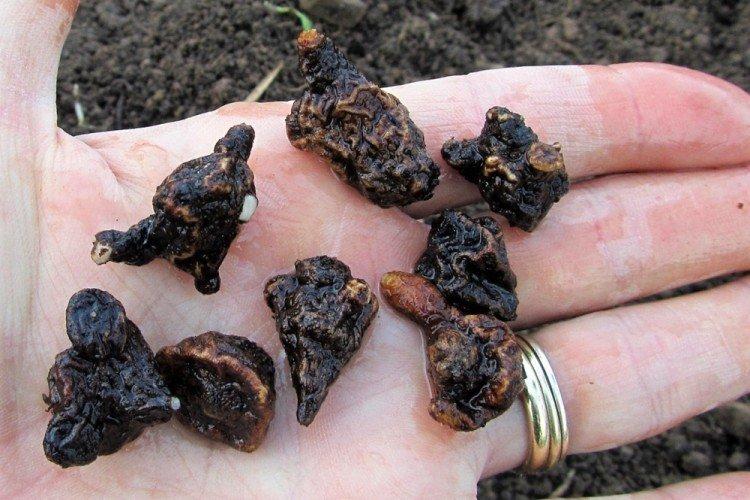
Pest and disease control
Anemones are fully adapted to the changeable continental climate and northern cold weather. They are almost not susceptible to disease, if you follow the rules of care. The most common pest is the leaf nematode, which leaves yellow-brown spots on the leaves. It is important here to remove the affected plants in time and replace the soil.
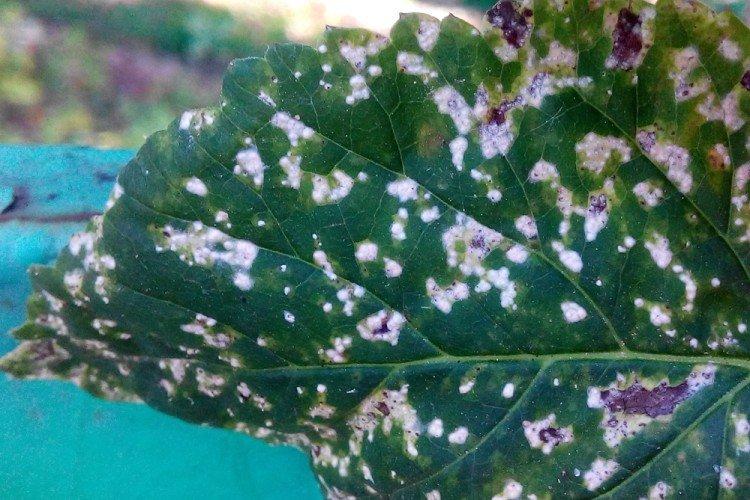
Anemones - photo
Anemones will decorate any garden or flower bed, they create whimsical landscape compositions and luxurious bouquets. Look at their beauty!
